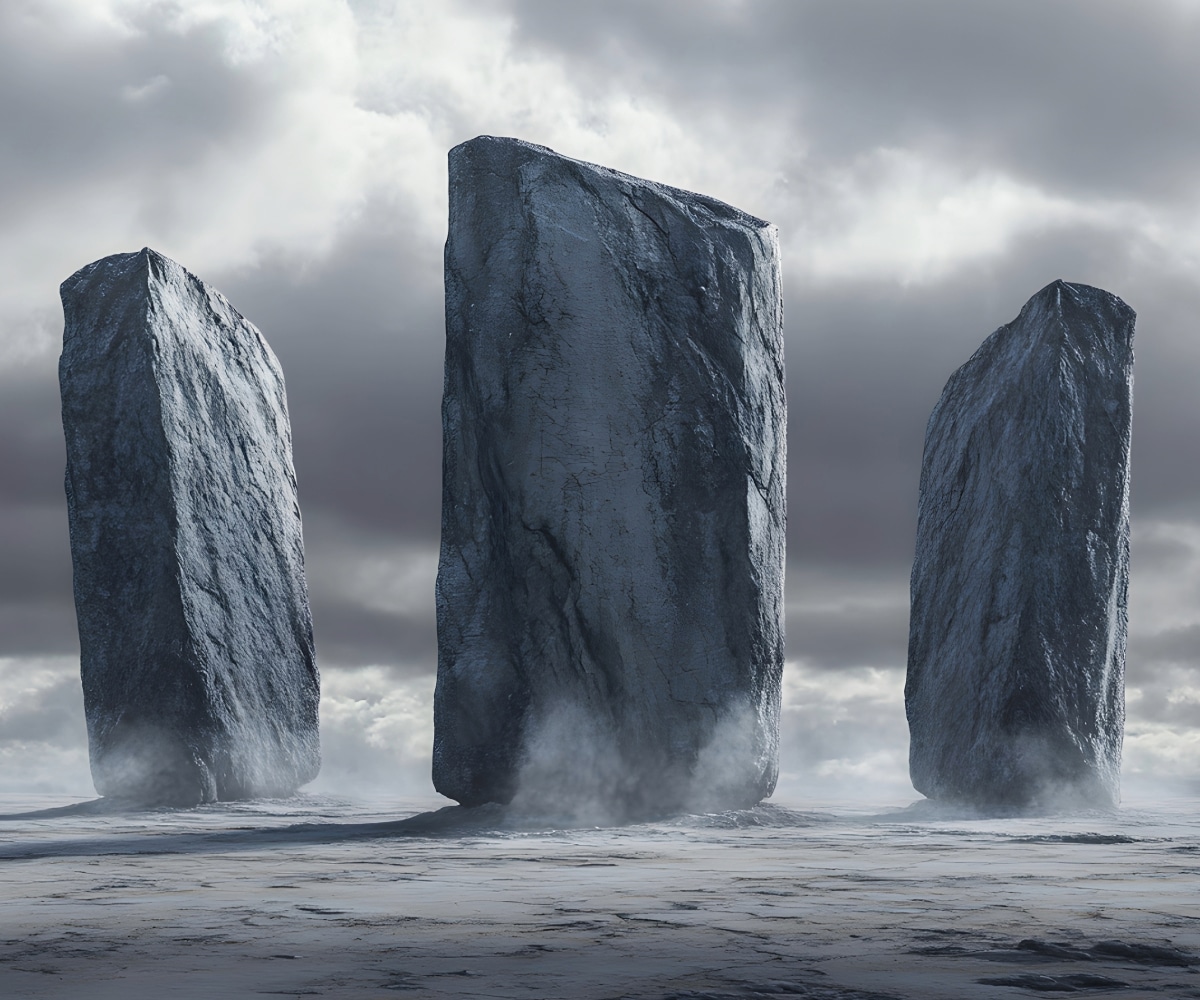Your cart is currently empty!
A Tale of Three Genres

Disclaimer: This post may contain affiliate links for books we recommend. If you make a purchase through these links, at no additional cost to you, we may earn a small commission. See our full Terms of Use here.
Sci-fi, fantasy, and sci-fantasy are three of the most popular genres out there in books, movies, and video games. But what makes them different? And what makes them similar? Are they all just sci-fi with different names, or do they each have distinct differences? There are plenty of stories that mix and mingle the elements of these categories in interesting ways, but to make it simple, let’s look at these three genres individually. Whether you’re looking to write your first sci-fi book or you’re a seasoned fantasy author who’s never heard of sci-fantasy before, this guide will help you understand the differences between sci-fi, fantasy, and sci-fantasy.
The History
We widely accept that the first true science fiction novel was Mary Shelley’s Frankenstein, published in 1818. We can find some elements of science fiction in earlier works, but none that so concisely define and introduce the form. As for fantasy, the roots of the genre are a bit more difficult to trace. Some say it began with oral storytelling traditions, while others point to works like The Epic of Gilgamesh or One Thousand and One Nights. It wasn’t until the late 19th century that fantasy took shape as a genre with works like George MacDonald’s The Princess and the Goblin and Lewis Carroll’s Alice’s Adventures in Wonderland.
We usually root science fiction stories in reality but extrapolate a future out of current trends. Fantasy stories often involve magic, different worlds, and supernatural creatures. And finally, sci-fantasy involves elements from both genres (i.e., wizards fighting robots). The definition of what makes a story either sci-fi, fantasy, or sci-fantasy depends on who you ask. For some people, it’s when the story takes place in an imaginary world. For others, it is the level of scientific accuracy. Still, for others, it may have something to do with whether there are spaceships involved. Let’s inspect.
Sci-Fi
Science fiction is a genre of speculative fiction that typically deals with imaginative and futuristic concepts, such as advanced science and technology, space exploration, time travel, parallel universes, and extraterrestrial life. It has been called the literature of ideas, and often explores the potential consequences of scientific, social, and technological innovations. Sometimes, science fiction can be as a type of thought experiment in which one uses contemporary scientific knowledge to predict possible future events or developments. The genre has many subgenres. Books that combine elements of sci-fi and horror are classified as sci-horror, while those combining elements of sci-fi and suspense may be called thrillers. These categories sometimes overlap, as with Stephen King’s novel Firestarter.
Authors sometimes use the term to describe stories written about things that have not yet happened but might happen in the future. For example, H. G. Wells’ War of the Worlds is an early work of British science fiction. Its opening lines are:
No one would have believed in the last years of the nineteenth century that this world was being watched keenly and closely by intelligences greater than man’s.
The story starts off with an astronomical event occurring on Mars before describing a series of increasingly shocking events on Earth, culminating in what seems to be an invasion by Martians. However, given that Wells never saw himself as writing anything other than pure fantasy, we could accurately describe it as fantastic fiction with only fictional elements within it.
Fantasy
Fantasy is a genre of speculative fiction that typically deals with imaginative and supernatural concepts, such as magic, dragons, and elves. It often has a medieval or otherworldly setting, although it can also take place in the modern day. In most cases, the goal of a fantasy story is to allow readers to escape from their own world and experience something new. Themes vary depending on the author’s style, but common ones include justice vs. injustice, man’s inhumanity to man, conflict between humans and non-humans, tolerance for those who differ from oneself, and survival in extreme circumstances. There are three general types of fantasy stories: high fantasy, which involves worlds like Middle Earth; urban fantasy, which usually takes place in present-day society; and low fantasy, which deals with adventures against fantastical creatures like unicorns.
Some books containing elements of fantasy can contain heavy realism. Examples of these include Anne Rice’s Interview With the Vampire and Catherynne M. Valente’s The Girl Who Circumnavigated Fairyland in a Ship of Her Own Making. These titles are rooted firmly in modern society rather than opting for more fantastical places like Middle Earth or Narnia. They focus less on topics like wizards and spells, instead concentrating on human struggles. They fall into the category of Low Fantasy. In contrast, George R. R. Martin’s A Song of Ice and Fire series contains many traditional elements of high fantasy. Characters wield swords made of Valyrian steel and have names like Daenerys Targaryen and Jaime Lannister. I would not categorize this series as Low Fantasy because its setting is closer to medieval times. Also, unlike Interview With the Vampire and The Girl Who Circumnavigated Fairyland in a Ship of Her Own Making, this series is primarily about action and fighting. Finally, regarding thematic content, A Song of Ice and Fire deals heavily with death—which ties into the man’s inhumanity to man theme.
The similarities between science fiction and fantasy largely depend on what elements the author incorporates into their work. In both genres there is an emphasis on adventure with fantastic elements such as spaceships or time travel, but unlike science fiction there isn’t much research involved because of its make-believe nature. Instead, writers create their own universes with magical beings and universes. Although some people think that sci-fi and fantasy are interchangeable terms, they aren’t actually the same thing at all. With science fiction, there is heavy reliance on scientific principles, while in fantasy, these principles don’t exist at all. For example, whereas one may predict when the sun will rise based on factual information collected by scientific means, wizards don’t need to do any calculations when casting spells!
Sci-Fantasy
A genre that has risen in popularity in recent years, sci-fantasy is a blend of science fiction and fantasy. It’s a story that takes place in a world that is not our own, but which contains elements of both science and magic. Often, it includes elements of both genres, such as magic and futuristic technology. Besides an otherworldly element, sci-fantasy also has a focus on world-building. In a sci-fantasy story, the world is just as important as the characters. Unlike science fiction, sci-fantasy relies more heavily on tropes, like dragons or fairies, for their story to be believable. Unlike traditional fantasy stories which can take place anywhere from modern day Earth to fictional kingdoms far away from home, sci-fantasies are typically set in an alternate reality or in another galaxy entirely, one that may include spaceships or robots alongside medieval weaponry like swords and sorcery spells!
The themes explored in these stories are usually those of science vs. nature, or technology vs. magic. Characters in these stories often have to choose between two worlds, or two ways of life. As a result, they often see both sides of the argument. A character raised in a technologically advanced society may find themselves drawn towards magic because it represents something pure and untouched by modernity. This is not always the case. When writing sci-fantasy, you need to pay attention to detail so readers know what kind of world your characters inhabit.
There’s also an important distinction between this genre and sci-fi/fantasy cross over books such as Philip Pullman’s His Dark Materials trilogy (which includes elements of sci-fi, fantasy, horror). In sci-fantasy novels, the setting is not just one or the other but a combination of both. There might be fantastical creatures living alongside humans on Earth in an imagined future. Writers like Gene Wolfe, Margaret Atwood, Kurt Vonnegut Jr., and John Wyndham all explore this idea in their work. That said, this isn’t really a subgenre so much as a theme. Some authors write stories that straddle the line between genres. J. R. R. Tolkien’s Lord of the Rings falls into this category – its epic scale and exploration of themes about good vs evil make it fit more than one category at once.
What Will You Write?
Sci-fi, fantasy, and sci-fantasy each have an intellectual component, while literary fiction is more emotional. Unlike literary fiction, their plotlines often have twists and turns that keep readers guessing until the very end. Because of the lack of grounding in real life, the plots are usually less complicated than other genres. That doesn’t mean that some modern authors haven’t taken great care to make them feel plausible. That’s what makes sci-fi, fantasy, and sci-fantasy so fascinating to explore. As you delve into each genre, there will be plenty of overlap—but you’ll also find nuances that set them apart.
If you choose to stay within a certain genre, know that some elements may stray. It’s up to you and your editing team to go back and change to fit the theme. It may also be beneficial to leave yourself open to wherever the story takes you. Once written, the story can be defined and then honed. In sci-fi, there must be science fiction. If they’re not, they could technically fall under another umbrella. To qualify as fantasy, it needs to include something fantastical happening beyond human understanding (e.g., magical powers). Sci-fantasy incorporates both science fiction and fantasy. Whatever you have when you finish, be sure it’s something your readers will love.
-R.E.

